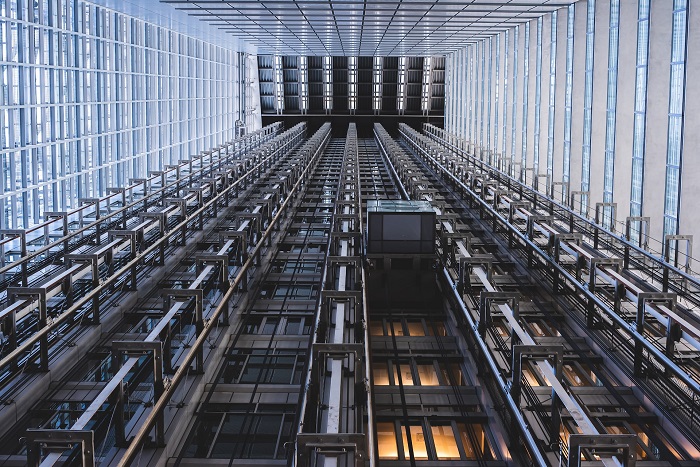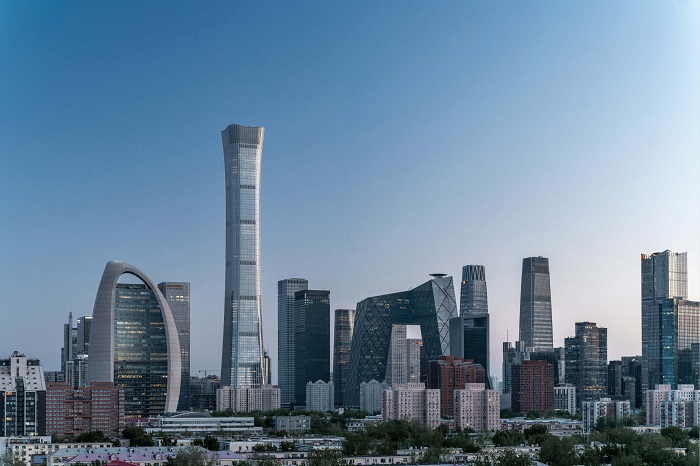ISABEL RUBIO ARROYO | Tungsteno
There are more than 18 million elevators in operation worldwide, many of which spend a significant amount of time standing still. But what if, when they were not transporting people, they could be used to store or generate electricity? That is the ambitious goal pursued by a team of scientists at the International Institute for Applied Systems Analysis, who have developed a gravity-based system to turn tall buildings into batteries and improve power quality in urban environments.
The challenge of storing energy in lifts
The planet is undergoing a rapid transformation away from our dependence on fossil fuels. As the United Nations has indicated, renewable energy is key to tackling the climate crisis, and its growth seems unstoppable. By 2026, the International Energy Agency forecasts that global renewable electricity capacity will increase by more than 60%. By that year, this type of energy is expected to account for almost 95% of the rise in global energy capacity. Solar power alone will provide more than half of this increase.
But this transition requires affordable solutions for storing energy. Some scientists and companies are investing in gravitational energy storage, a technology for storing potential energy with solid materials at different heights. A team of researchers at the International Institute for Applied Systems Analysis (IIASA) have come up with a new concept using lifts and empty flats in skyscrapers to store energy. This solution, dubbed lift energy storage technology (LEST), is based on gravity and involves storing energy by "lifting wet sand containers or other high-density materials, transported remotely in and out of the lift with autonomous trailer devices."
The study's lead author, Julian Hunt, has always been fascinated by topics related to potential energy—the idea of generating power from changes in altitude, such as hydroelectric power, pumped-storage, buoyancy, and gravity energy storage. "The concept of LEST came to me after spending a considerable amount of time going up and down in a lift since I recently moved into a 14th floor flat," he explains.

Energy consumption in elevators is typically 2% to 10% of the building's total consumption. Credit: Unsplash
Skyscrapers in New York, Dubai and other major cities
The strength of this proposal is that it can take advantage of already existing infrastructure. The idea is to use lifts in high-rise buildings to transport weighted containers from lower to upper apartments to store energy, and do the reverse to generate electricity. This system, according to the researchers, "is particularly interesting for providing decentralized ancillary and energy storage services with daily to weekly energy storage cycles."
Buildings consume about 40% of the world's electricity, according to the study. Their demand tends to vary greatly on a daily and weekly basis, and during holiday seasons. Lift energy consumption is typically 2%-10% of total building consumption. During peak hours, they can account for up to 40% of the electricity demand.
"LEST systems are particularly interesting during the night when most lifts are not being used, as the autonomous trailers can continue to fill the lifts with containers to provide ancillary services to the power grid," the researchers explain. The global storage potential for the technology ranges from 30 to 300 GWh and is mainly in metropolitan areas with high-rise buildings in cities such as New York, Chicago, Toronto, Dubai, Doha, Beijing, Shanghai, Hong Kong and Sydney.

World map showing cities with buildings taller than 250 metres. Credit: Hunt et al.
The limitations of such an ambitious technology
Despite the potential of this system to generate a small but constant amount of energy, it also has some limitations. For a start, there are still some details that need to be worked out before the system can be implemented. In addition, space must be found inside the buildings to store the weights and the study did not take into account the load-bearing capacity of the roof of these structures. That is, the total mass in kilograms per square metre that the roof can support without collapsing. "It is rather unlikely that buildings in the past have been designed with the idea that they might serve as energy storage facilities in the future," the research notes.
In addition, energy planners would have to be convinced of the potential benefits of such a storage system compared to alternatives. Behnam Zakeri, a researcher in the IIASA Integrated Assessment and Climate Change Research Group and co-author of the study, believes that policymakers and electricity system regulators should adopt strategies to incentivise high-rise buildings to share their distributed storage resources, such as LEST, with the central grid.
Power generation will depend on the number of lifts in the buildings under consideration. The technical lifetime of the system, according to the researchers, can vary from 20 to 30 years. It is still too early to tell whether this lift energy storage technology can be massively deployed in high-rise buildings. But Zakeri is clear: "Environmentally friendly and flexible storage technologies like LEST are set to become more and more valuable to society in a future where a large share of its electricity comes from renewables."
· — —
Tungsteno is a journalism laboratory to scan the essence of innovation. Devised by Materia Publicaciones Científicas for Sacyr’s blog.
